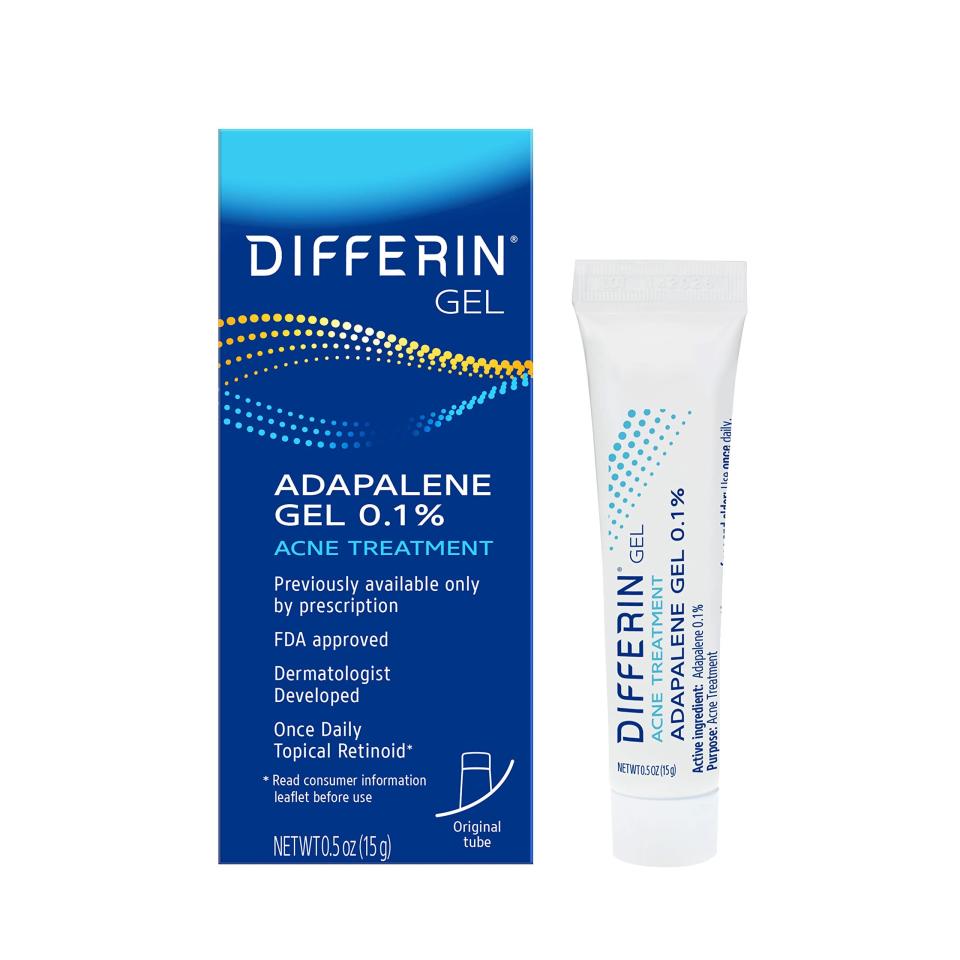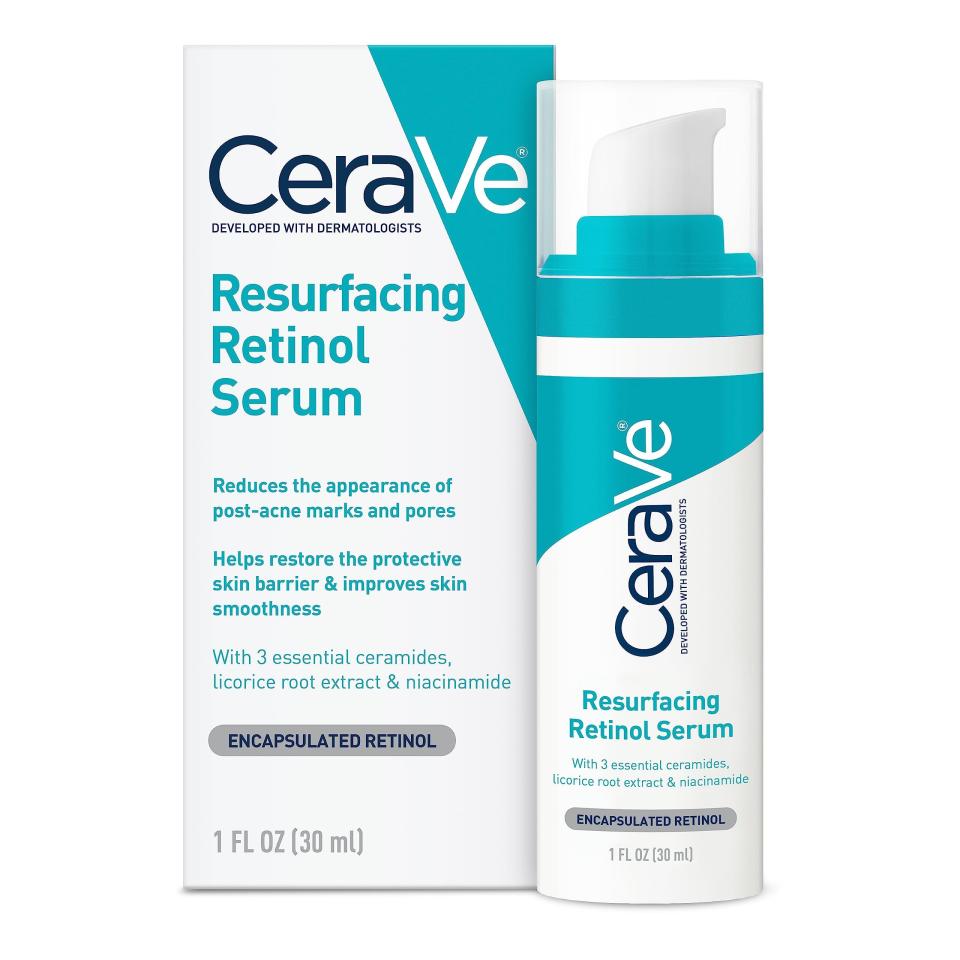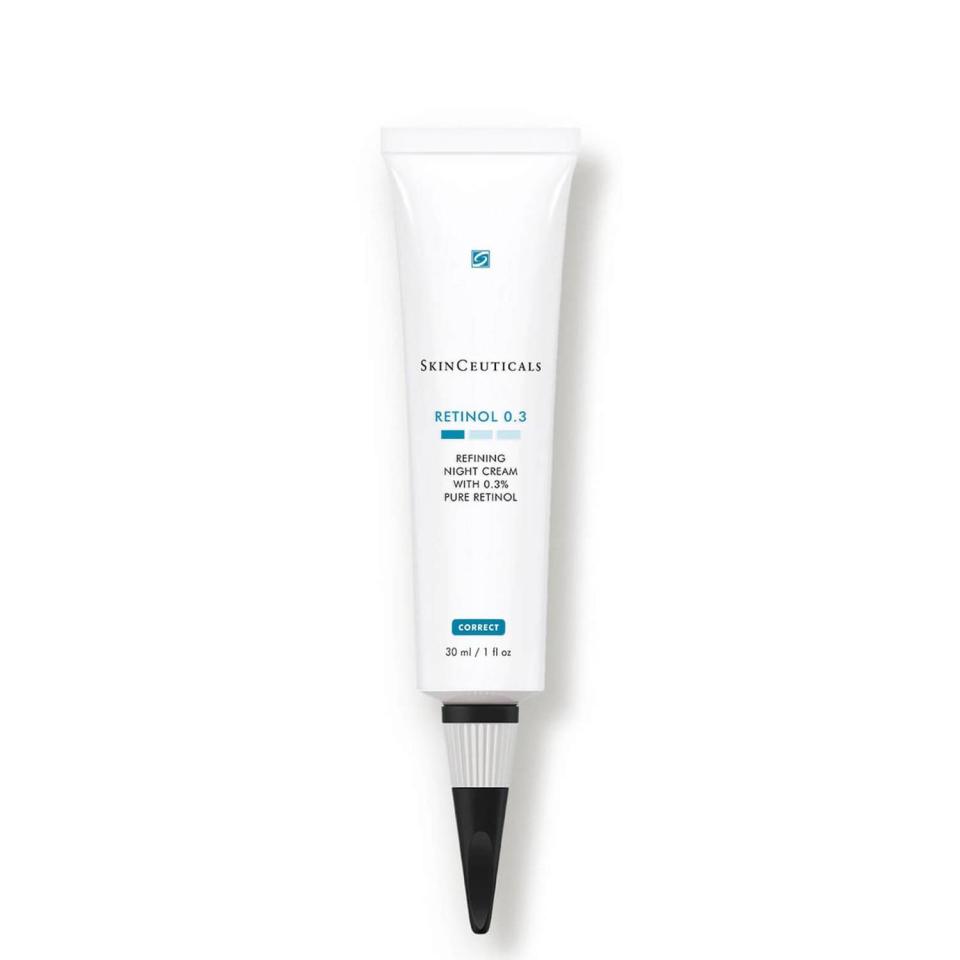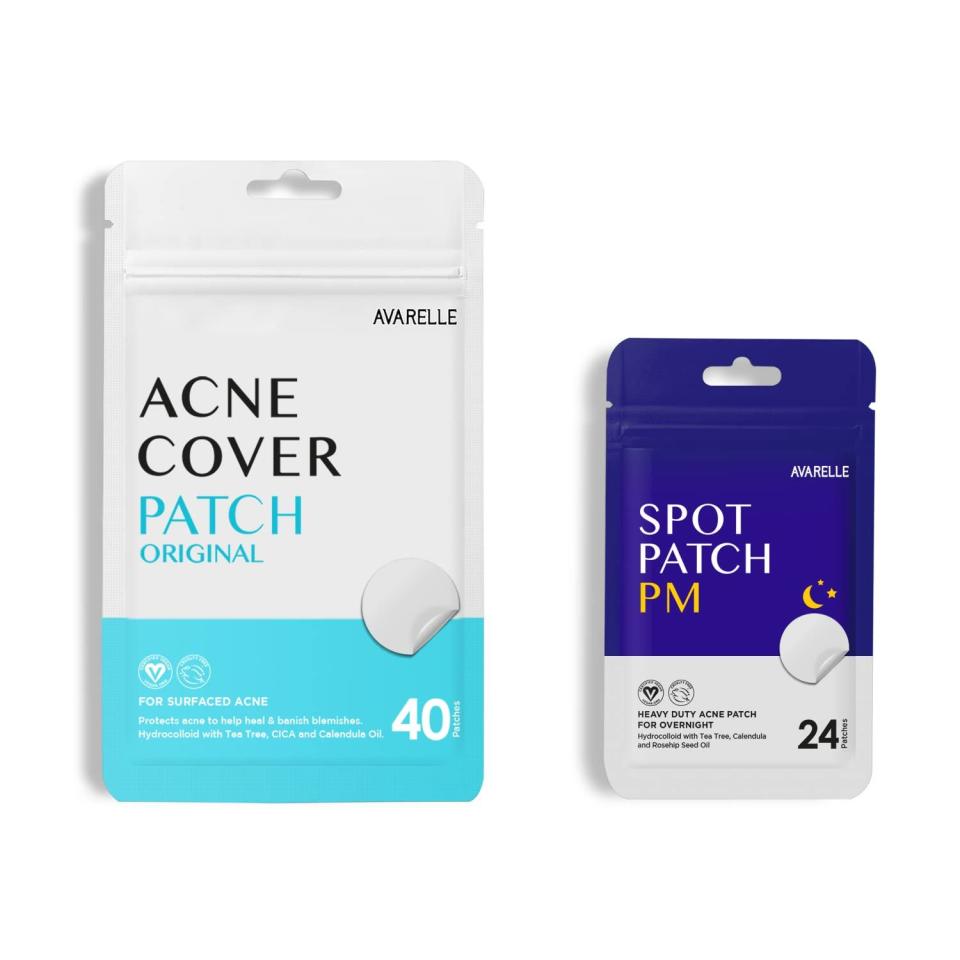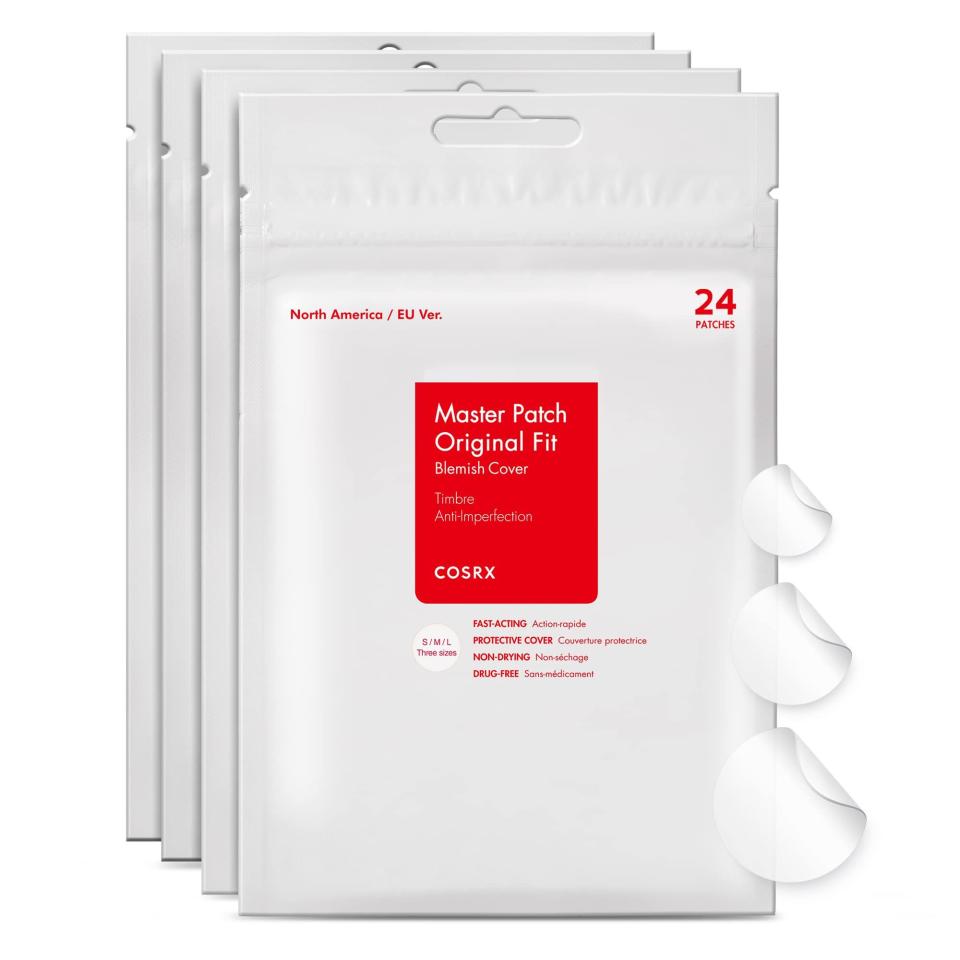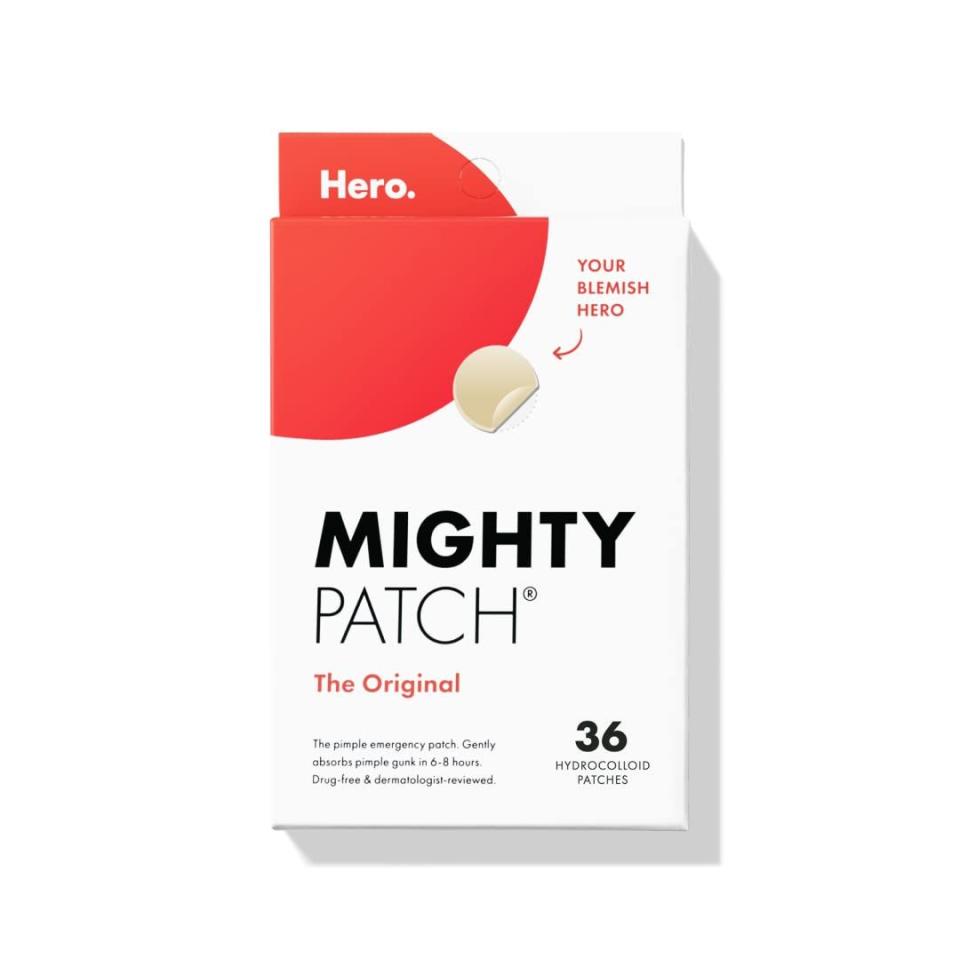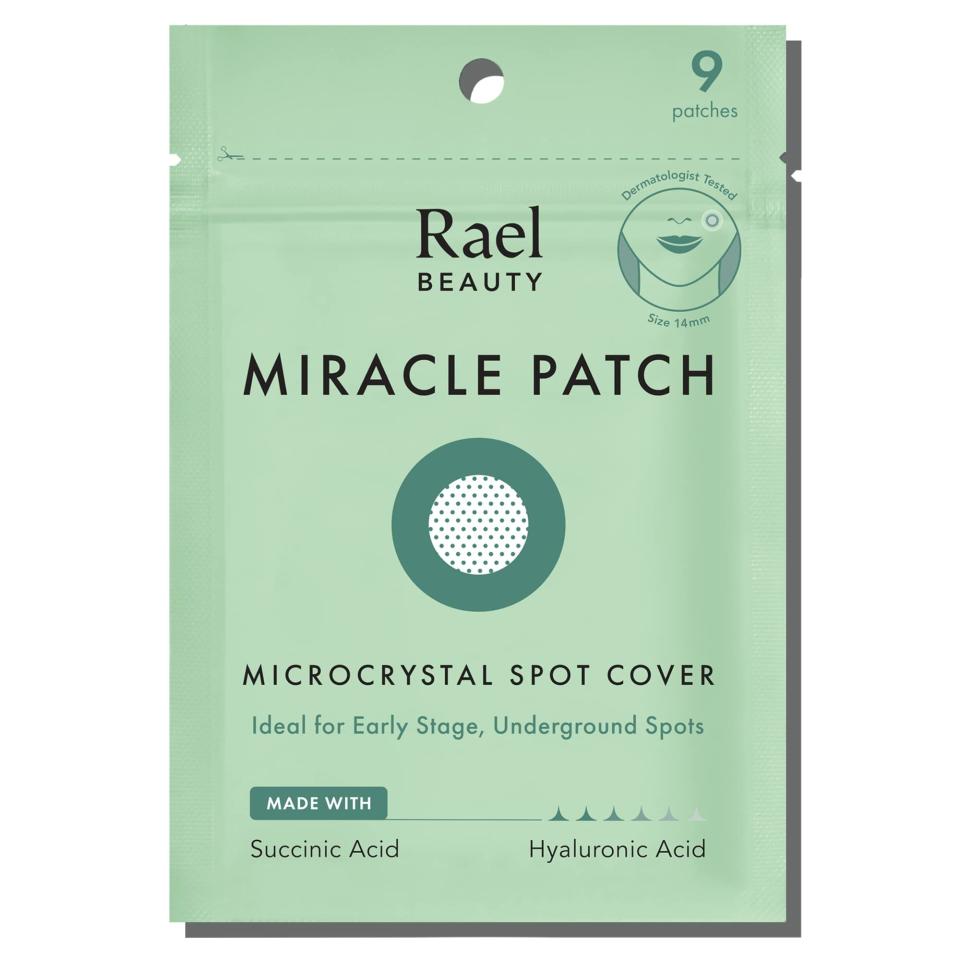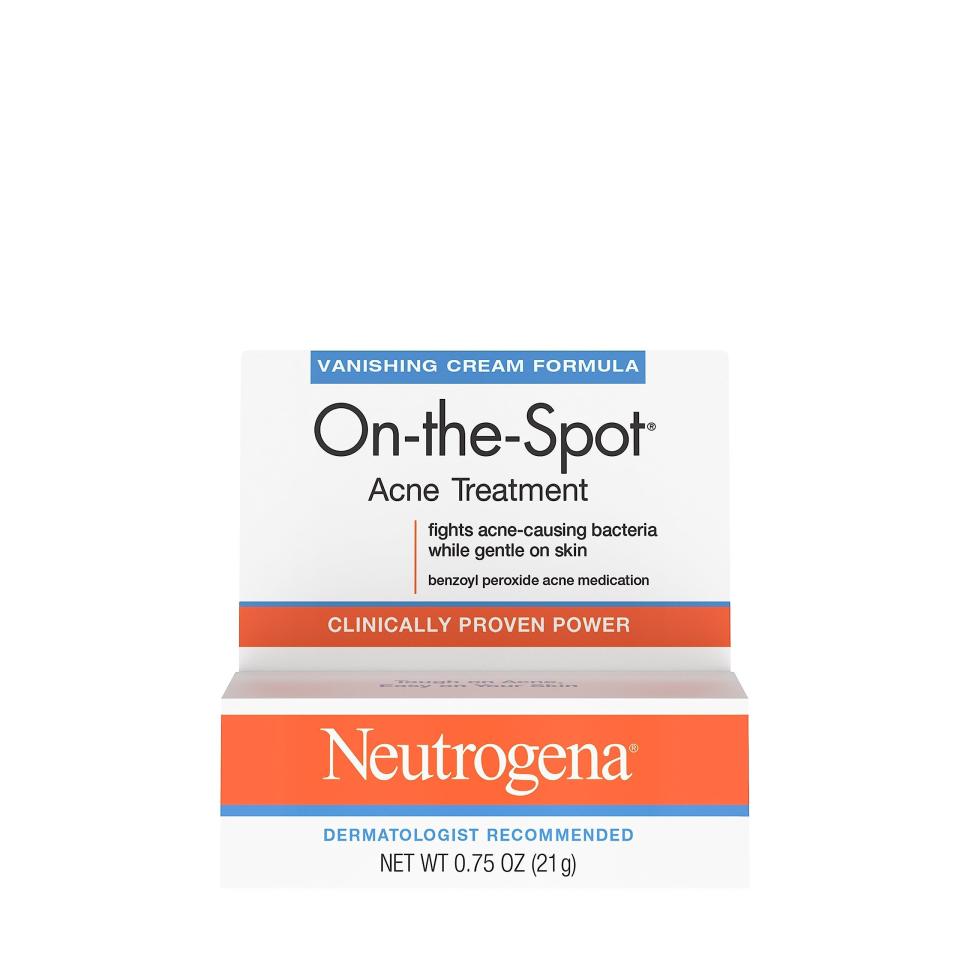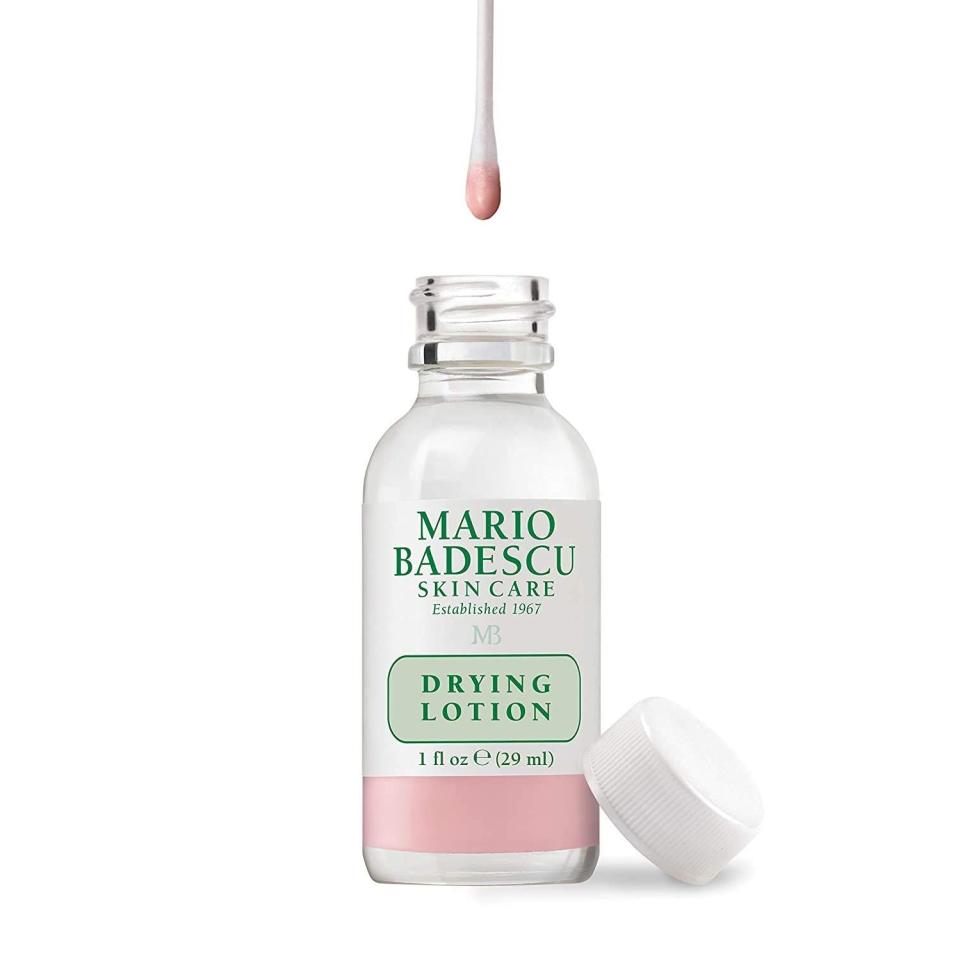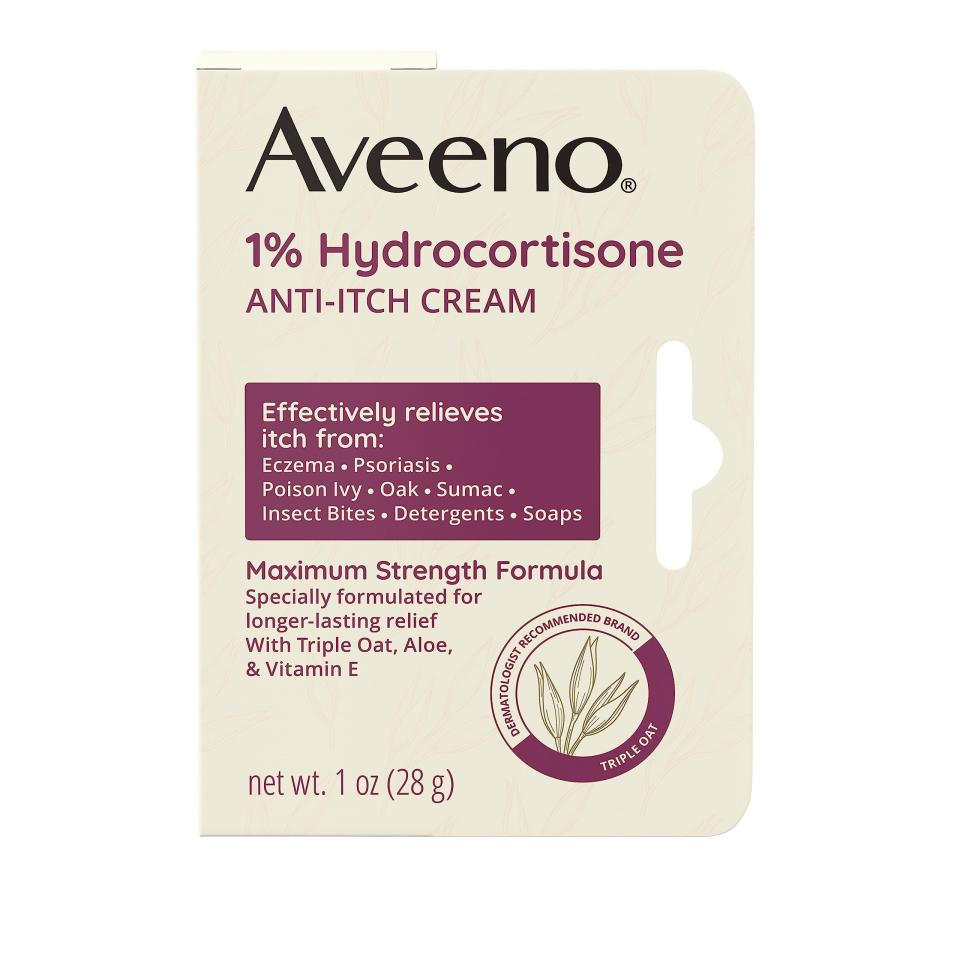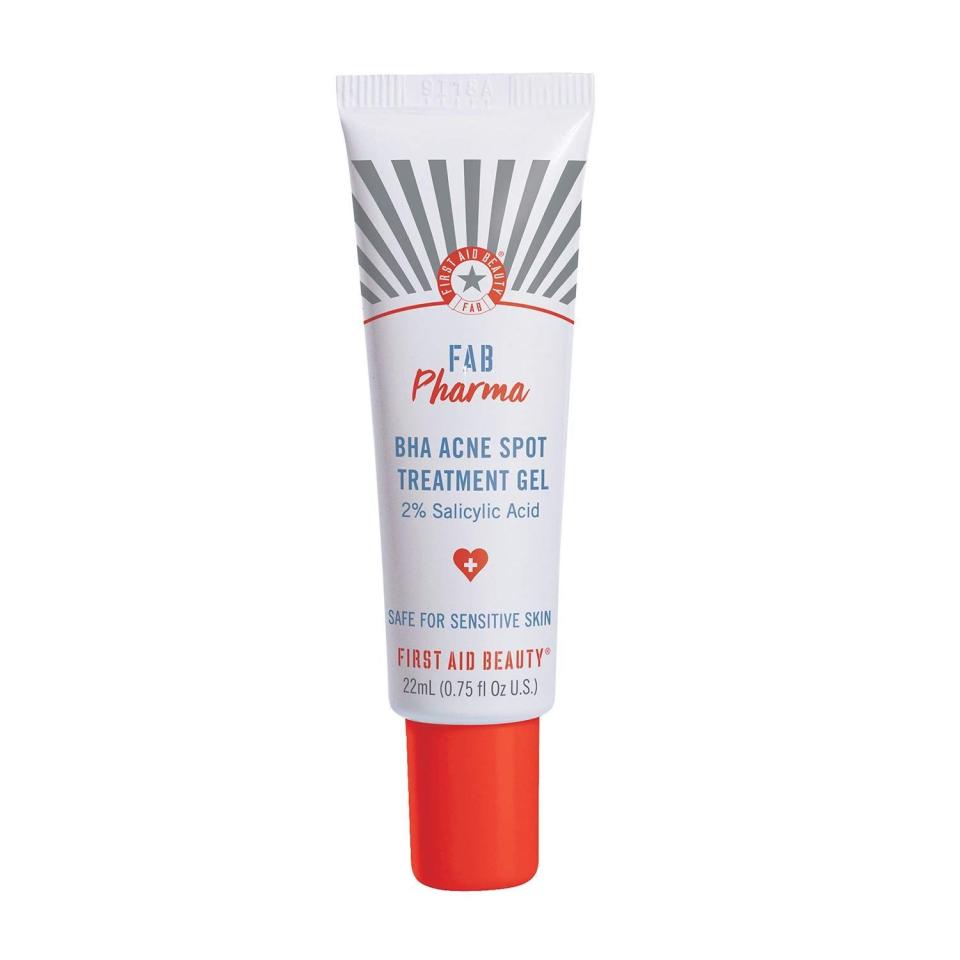What Dermatologists Want You to Know About Chin Acne

"Hearst Magazines and Yahoo may earn commission or revenue on some items through these links."
If you’re wondering how to get rid of chin acne, you’ve come to the right place. Breakouts on and around the chin are common among those who struggle with adult acne, yet they are often some of the most difficult to treat.
The first thing to remember is that there’s no one-size-fits-all approach to eliminating blemishes for good—that’s because there are so many different causes for this type of breakout. Once you narrow down what’s behind it, you’ll be better equipped to follow an effective treatment plan.
“Similar to other acne, chin acne may be caused by a combination of factors including increased sebum production, clogged pores, inflammation, and bacteria,” says Marisa Garshick, M.D., F.A.A.D., a board-certified dermatologist in New York. “In some individuals, there may also be a hormonal component that can contribute to acne as well.”
Meet the experts: Marisa Garshick, M.D., F.A.A.D., a board-certified dermatologist in New York; Heather Rogers, M.D., F.A.A.D., a board-certified dermatologist in Washington; and Heather Richmond, M.D., F.A.A.D., a board-certified medical and cosmetic dermatologist in Texas.
Keep reading to figure out exactly what’s causing pimples on your chin and find the best acne treatment for you (including over-the-counter acne products and in-office treatments) recommended by experts.
What causes chin acne?

Like other forms of acne, there are multiple reasons your chin may break out. Here are some common ones for finding pimples on your chin:
Hormonal chin acne
You’d think that hormonal acne would stop once you’re through puberty, but hormonal chin acne is most often seen in women older than 25 through menopause, explains Heather Rogers, M.D., F.A.A.D, a board-certified dermatologist in Washington. She says that these pimples often develop the week leading up to your menstrual cycle, and are due to mild elevations in testosterone levels.
Dr. Garshick adds that they’ll usually appear on the bottom third of your face on the chin and jawline. The bumps are characterized by extremely tender and deep redness, making them incredibly difficult to pop or get rid of, Dr. Rogers says.
Fungal acne
Noticing small, reddish bumps on your chin? If so, you could be experiencing fungal acne. Also known as pityrosporum folliculitis or malassezia folliculitis, fungal acne happens due to “inflammation of the hair follicle caused by an overgrowth of yeast on the skin,” Joshua Zeichner, M.D., director of cosmetic and clinical research at Mount Sinai Hospital previously explained of fungal acne.
Fungal acne appears as red bumps that are a little smaller than standard acne bumps as opposed to blackheads, whiteheads, or pustules. Sweating, chafing, and even a course of oral antibiotics may cause fungal acne.
Maskne
At the height of the Coronavirus pandemic, many dermatologists saw an increase in patients suffering from acne in places covered by face masks, like the chin area. Dr. Rogers explains that this is due to a change in your skin biome caused by your breath being trapped under the mask, which creates a moist environment and introduces new organisms.
Alternatively, Dr. Garshick adds that you could also be suffering from acne mechanica. “This is a type of acne in that repeated friction and mechanical obstruction of the hair follicle can lead to clogged pores and breakouts, which is similar to what occurs with a helmet or chin strap,” she explains.
These are characterized as much more surface-level pimples like blotchy red bumps, whiteheads, and irritation around the mouth and nose, Dr. Rogers says.
How to get rid of chin acne fast
We’ve all seen the pimple-popping videos that circulate on the internet, but when it comes to an at-home remedy to quickly zap chin pimples, doing it yourself may not be the best answer. “While it may be tempting, it is important to avoid picking, popping, or squeezing your breakout as that can trigger more inflammation and lead to potential scarring,” Dr. Garshick warns.
Instead, try one of these expert-approved quick fixes:
Retinol
Dr. Rogers says using retinol regularly for hormonal acne can help with skin turnover, getting the deep acne to surface and disappear. Not only should retinol help resolve your chin acne faster, but it may actually make the dark spots and shadows disappear quicker, too. She suggests starting with 0.25% for dry skin and 0.5% for oily or less sensitive skin. Anything higher will be super drying.
“Retinols are extremely beneficial to unclog pores and prevent acne, and they can be found in many over-the-counter formulations,” Dr. Richmond says. She notes that retinol can also be sold under the name adapalene.
Adapalene Gel 0.1%
Resurfacing Retinol Serum
Retinol 0.3
Hydrocolloid patches
When you feel a pimple under the skin, hydrocolloid patches may help bring hormonal acne to the surface faster, ultimately resolving them quicker, Dr. Rogers says.
Dr. Garshick likes the COSRX Acne Pimple Patch because it acts as a protective barrier and helps draw out oil and reduce breakouts. “This is especially great for someone who has a tendency to pick at breakouts as it can help to create a barrier to prevent squeezing or picking,” she says.
Acne Absorbing Cover Patch
Acne Pimple Patch
Mighty Patch Original
Pimple Patches
Probiotics
For acne caused by mask-wearing, Dr. Rogers says the best oral probiotic aimed at skin health can help balance the skin biome. She suggests eating fermented foods like yogurt and kimchi to help repopulate the bacteria of the skin or trying skin-focused probiotic supplements like Hum Skin Squad. “Even taking that a couple of days can help normalize the skin,” she says. “Three or four days using a skin probiotic takes care of it.”
Spot treatments
For some pimples, a good spot treatment can do the trick to nix your breakout for good. Dr. Garshick suggests picking a benzoyl peroxide treatment or ingredients like salicylic acid to remove breakouts quickly. She loves Neutragena On-The-Spot Acne Spot Treatment for a benzoyl peroxide product or First Aid Beauty FAB Pharma Acne Spot Treatment for a salicylic acid spot treatment.
“But it is important to note that for deep or cystic breakouts, spot treatments may not be sufficient to make the spot go away and may just lead to excess irritation,” she warns.
On-The-Spot Acne Spot Treatment
Drying Lotion
Maximum Strength 1% Hydrocortisone Cream
FAB Pharma BHA Acne Spot Treatment Gel
Tea tree oil
For those looking for a natural remedy for acne, Dr. Garshick says tea tree oil may be helpful in reducing inflammation and bacteria. She likes the St. Ives Acne Control Face Cleanser with Tea Tree, which also features salicylic acid to treat acne.
“But in general, it is always best to speak with a dermatologist regarding your treatment options as some natural ingredients can still be irritating or lead to redness or sensitivity of the skin,” Dr. Garshick notes.
LED therapy
If you’re not looking to add any additional topical products to your skincare routine, try opting for light therapy instead. An LED face mask may help reduce the acne-causing bacteria on the skin, in turn helping to treat and prevent breakouts.
These masks often have a few different colored-light options to help tackle various skin concerns, but if you’re looking to treat acne, you’ll want to turn yours to the blue setting. “Blue light is thought to have antimicrobial effects and is often used with red light to treat acne,” Dr. Zeichner previously said.
Prescription medications
If your home quick fixes don’t seem to work, head to the dermatologist to determine the best treatment for your acne. There are a number of prescriptions that often do the trick when over-the-counter ones fail. Dr. Rogers says that your dermatologist may suggest a course of oral antibiotics to kill acne-causing bacteria, settle inflammation, and resolve some of the tenderness of the larger pimples.
If the breakouts are frequent and cause serious discomfort, there are other prescription medications that offer faster results, especially if you’re dealing with hormonal acne. Dr. Rogers notes that hormonal chin acne will last about a week leading up to your menstrual cycle, but as you age these breakouts may pop up throughout the month. And unfortunately, these deep pimples aren’t easy to nix.
“Hormonal acne is hard to treat with topicals because they’re such deep pimples,” Dr. Rogers says. She advises chatting with your dermatologist about treatment options. She typically recommends patients take a very low dose of spironolactone, an oral medication that can inhibit your body from converting estrogen into testosterone, which causes hormonal pimples.
Another oral prescription you may have heard about is isotretinoin, also known as “Accutane.” This powerful medication “can be considered for those dealing with moderate to severe acne that may be cystic or associated with scarring,” says Dr. Garshick. “In general, it is used for a limited period of time, such as six months.” It’s important to note that while this medication is known to be very effective for treating acne, it does not specifically target the hormonal component of acne, and thus may not completely eliminate hormonal breakouts in those who experience this type of acne. And it can be too powerful for some.
If you’re looking for a topical prescription instead, Dr. Rogers explains that your dermatologist may prescribe retinoids, topical antibiotics, or benzoyl peroxide creams. Another topical that may be especially good for those with hormonal acne is Winlevi, which acts similarly to spironolactone, Dr. Garshick adds.
In-office treatment
In addition to prescribing effective acne medications, there are in-office treatments your dermatologist may recommend.
A common one for large, painful pimples is a steroid injection, says Dr. Rogers, which should quickly resolve inflammation.
Another option is a chemical peel. While at-home face peels may be effective at managing mild acne or uneven skin texture, in-office ones penetrate more deeply. “Chemical peels can be a great option to help address acne, including chin acne, and can also help to address scarring and post-inflammatory hyperpigmentation,” says Dr. Garshick. “Peels like salicylic acid, a beta hydroxy acid, are especially good as they help to unclog the pores and work to prevent new breakouts.”
Your dermatologist or esthetician can also perform extractions to help manage your breakouts. “Extractions can be a good way to remove stubborn comedones, including whiteheads and blackheads,” Dr. Garshick says.
How to prevent chin acne
Keep your face clean. The number one thing you can do for your skin health is to wash your face every night, Dr. Rogers says. We recommend trying one of these best face washes for acne-prone skin. Additionally, Dr. Garshick recommends brushing your teeth before you wash your face to ensure you remove any toothpaste residue which can contribute to skin irritation and breakouts.
Keep your skincare routine simple. Dr. Rogers adds that if you’re struggling with chin acne, you really don’t need to do much to help your skin barrier get back to normal. A good wash and moisturizer should do the trick. And if you choose to use additional products, Dr. Garshick notes that you should avoid any pore-clogging cosmetics and skincare. Instead, opt for non-comedogenic and oil-free products.
Reduce stress levels. Stress acne is real, and often goes hand-in-hand with chin acne and hormonal acne. “Hormonal acne and acne around the chin can definitely be related to stress so working to reduce stress can help to prevent these types of breakouts,” Dr. Garshick explains.
Don’t touch your face. “Many people like to rest their chin on their hands and this can lead to more pimples and breakouts, so it is best to avoid touching your face to prevent chin breakouts,” says Dr. Garshick.
Wash your bedding. If you’re not already regularly washing your sheets and pillowcases, Dr. Garshick recommends taking this important step. Your bedding can harbor a buildup of oil and dirt which often increases the risk of breakouts, she explains.
Will chin acne go away without treatment?
While chin acne may go away on its own, it’s more likely that you will need some kind of at-home or in-office treatment to not only heal existing breakouts but to reduce future breakouts too. This is especially true for hormonal chin acne, which Dr. Rogers says is often more difficult to treat and requires a more tailored approach.
When to see your doctor
If you try the above treatment methods with little success, it might be time to schedule a visit with your dermatologist. “For any patient struggling with acne, I suggest seeing a dermatologist to discuss options and to begin a treatment regimen,” Dr. Richmond explains. “There is no one-size-fits-all approach, and treatments are tailored to the individual patient over time to find an effective combination.”
..
You Might Also Like

